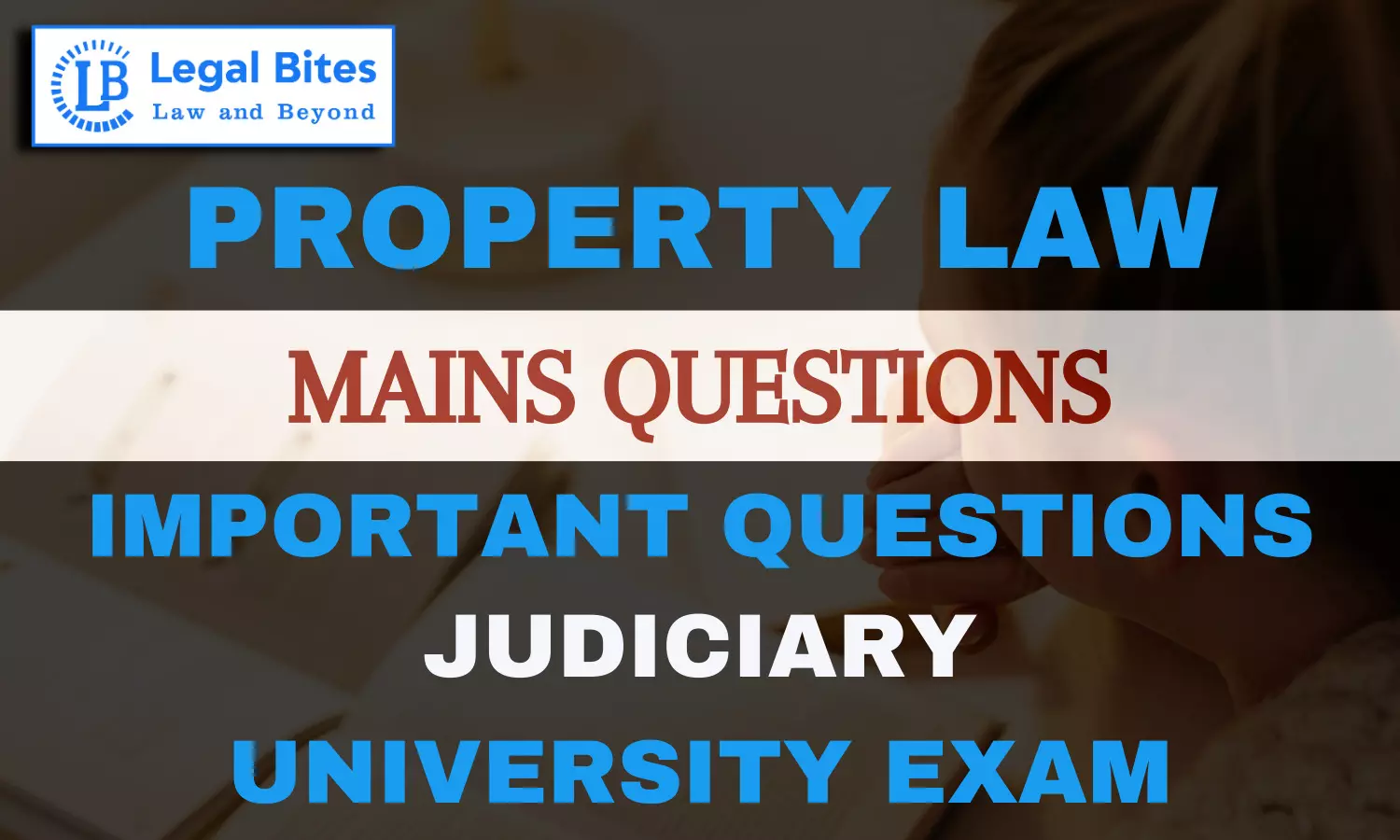At a partition of joint family property between two brothers A and B governed by the Mitakshara system, X is allotted to A; B however, sells X to C as though he is the full owner of the property.....State the Doctrine.
Find the answer to the mains question of Property Law only on Legal Bites.

Question: At a partition of joint family property between two brothers A and B governed by the Mitakshara system, X is allotted to A; B however, sells X to C as though he is the full owner of the property. Subsequently A dies and B inherits and takes possession of it. C sues B for possession of that property. State the Doctrine. [BJS 1977] Find the answer to the mains question of Property Law only on Legal Bites. [At a partition of joint family property between two brothers A and B governed...
Question: At a partition of joint family property between two brothers A and B governed by the Mitakshara system, X is allotted to A; B however, sells X to C as though he is the full owner of the property. Subsequently A dies and B inherits and takes possession of it. C sues B for possession of that property. State the Doctrine. [BJS 1977]
Find the answer to the mains question of Property Law only on Legal Bites. [At a partition of joint family property between two brothers A and B governed by the Mitakshara system, X is allotted to A; B however, sells X to C as though he is the full owner of the property. Subsequently, A dies and B inherits and takes possession of it. C sues B for possession of that property. State the Doctrine.]
Answer
Section 43 of the Transfer of Property Act 1882 also known as provision for ‘feeding the grant by estoppel.’ Section 43 is based on two aspects, one is ‘doctrine of estoppel’ and the other is ‘equitable estoppel.’ This doctrine signifies that when a person promises something more than one possesses, then one has to complete one’s promise when one acquires the immovable property.
In the case of Ram Pyare v. Ram Narain & Others, 1985 SCR (2) 918, and Jumma Masjid v. Kodimaniandra Deviah, 1962 AIR 847, the Court held that to apply Section 43 TP Act, it was immaterial whether the transferor acted bonafide or fraudulently in making the representation. It is only material to find out whether the transferee has been misled.
The facts of Jumma Masjid’s case are similar to the case at hand. In the above case, three brothers( B1, B2, B3) had mortgaged property in the year 1990 to the mortgagee for a period of twenty years, from 1900 to 1920. In the terms of the contract it was mentioned that after the completion of twenty years, the property will be returned to the family of the three brothers.
In the family, the two brothers were married, and their wives were W1 and W2, while the third brother was unmarried. These three brothers also had a sister S, and she had two children, and three grandsons ( Gr1, Gr2, and Gr3). All the brothers died and the sister too. Just the two wives and the grandchildren remained.
According to the law, till the wives are alive they will hold the property. In case both the wives die the property will go to the sister and eventually to the grandsons. Grandsons were the heirs under the ground of spes successionis. It was also mentioned that Gr1 will receive ½ of the share of the property while the other grandsons will get ¼ of the share of the property each.
Under the Transfer of Property Act 1882 in this case, Section 6(a) favours no transfer while Section 43 favours transfer if promised earlier.
It happened that the grandsons transferred the property to a transferee (T) and misrepresented the fact that they held the ownership. To this, W2 filed a case against the grandsons as she was still alive. It was the 1st appeal, where the court favoured the W1 and dismissed the case. However, it is to be noted that the transfer to T was still valid on the grounds of Section 43.
After this before the 2nd appeal, W2 died, and the property went to the grandsons. Here the transferee T claimed for the property as there was an existence of consideration behind the transfer.
To this a new party named Jumma Masjid claimed that the property was transferred to them in the form of a gift deed by the W2, also Gr1 had given them his portion i.e., ½ of the share with consideration of rupees 300.
The court observed that the transferee claimed to be valid and dismissed the claim of Jumma Masjid. This judgment signifies the rule of estoppel which is an evidentiary aspect while Section 6a substantive law and also mentions that in this case both the grounds cannot be combined, else it will lose the purpose of the doctrine.
So finally transferee T got the property where his claim was considered as a valid claim. It was also determined by the court that if the claim of Jumma Masjid was considered then it would lead to a consequence where the provision of spes successionis would get vague and the right to transfer would lose dignity.
Therefore, applying the doctrine and legal precedents in the case at hand, when A dies and B inherits and takes possession of the property, C can sue B for possession of that property.

Mayank Shekhar
Mayank is an alumnus of the prestigious Faculty of Law, Delhi University. Under his leadership, Legal Bites has been researching and developing resources through blogging, educational resources, competitions, and seminars.
